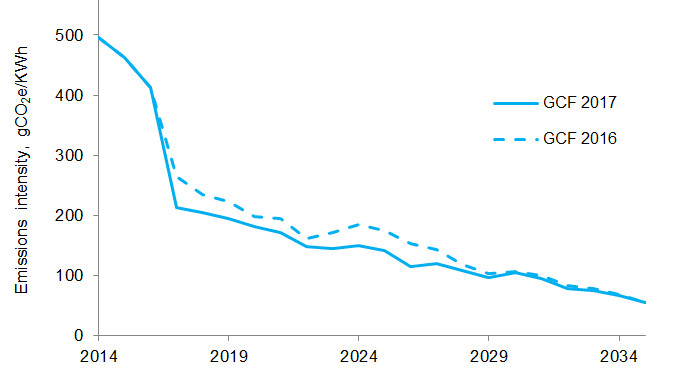Climate change will not stop unless we end gas heating
by Dave Pearson
For the last decade, at Star Renewable Energy we have been talking about the urgent need for a renewable energy focus that includes heating, as well as electricity generation.

The environmental impact of heating is double what electricity was and now, with the progress made in onshore and offshore wind, heating should become "the" topic needing to be moved forward.
Considering more than half of the energy we use is in the form of heat, wouldn't it be timely if a renewable, affordable and efficient way of heating homes and commercial buildings capable of addressing both the clean heat and zero carbon challenges existed? In fact, it does.
Water, air and ground source heat pumps deliver heat without delivering any nitrogen oxides (NOx), sulphur oxides (SOx) or carbon dioxide (CO2) emissions.
When it comes to meeting carbon targets, heat pumps are a future-proof solution as their only input is electricity, and their carbon footprint is therefore tied to the electricity grid's carbon content. As renewable electricity continues to be added to the grid, the carbon intensity of the grid declines and consequently, heat pumps decarbonise and potentially become zero carbon.
For heat pump technology to be extensively deployed, the government must push down on gas combustion machinery and increase funding for carbon-free heating technology as it becomes widely understood.
Sadly, we are making little progress and the progress that is being made is despite the inherent barriers that exist in policy. Even progress in new-build houses and buildings is slow. Planners are still allowing gas connections.
The question is why anyone would want to buy or lease a house or office building with a gas boiler, that will be degrading local air quality and contributing to the climate crisis for decades to come. This can only be explained by the lack of political leadership to raise awareness of the environmental impact.
We need to get across the message that "gas must go". Media channels such as the 6 O'clock News and advertisements next to new housing developments need to deliver the message effectively.
However, the bigger problem is that there is zero shift in the acceptability of gas in existing buildings. These are not affected by planning applications and therefore, there is a need for a different retrospective lever to be applied.
Across the UK, there is a blind spot in policy intervention to encourage and shift users to a new paradigm. Decarbonising heating and cooling in existing large buildings is possible by employing thermal networks or district heating fed by clean providers and specifically big heat pumps – and not gas combustion engines.
But, there is barrier after barrier to the inward investment needed: why is it easier to get planning permission to deploy gas pipes over district heating?
Why would a clean heat station, like the one we are building for the largest water-source heat pump in Scotland at Queens Quay, Clydebank, have to pay non-domestic rates which are equal to a tax on clean heat of about 45% when the equivalent charge on gas is tiny or non-existent?
Why are there no phase-down laws imposed on the continued use of gas burners in city centres when it is predicted that their NOx emissions will equal those from transport by 2025?
Why has VAT on clean heat solutions just gone up 400%? And why has the UK Government not made its 2018 commitment to announce the next steps to the Renewable Heat Incentive which is the only support mechanism to offset some of the costs to level the playing field with cheap, subsidised gas?
The solution has to be carrot and stick. Our vision is of a Fairopoly – a tri-partite agreement between cities, buildings and heat network developers.
If buildings can't decarbonise at an effective rate – as much as 10% per annum is needed – they will agree to join district heating when it is available. With enough "pledges", the cities can license developers to build the networks, allowing funds to be raised so creating employment and subsequent income and corporation tax.
The developers will pledge that heat will be from clean sources at a fair and transparent price and so the solution gets built and buildings can switch effortlessly to a cleaner solution.
And better still; these new energy stations will offer cooling to city users and might even directly import offshore wind, removing any concerns about grid stress but also helping to balance the grid by offloading the heating, which can be switched to stored hot water, freeing up the new power supply to help in cities.
The same cable could even be used for new electric vehicle charging hubs.
This is not dreamt up nonsense but is exactly what happened in Drammen in Norway. This allowed us to build our first district heat pump in 2010 that reduced the emissions and carbon footprint by 85% in one single step.
With world-leaders coming to Glasgow in November 2020 for COP26 I hope we can stand up and say we have decarbonised huge parts of the city by harnessing heat from the Clyde. It has to be the COP of "we got stuff done".
Dave Pearson is director of Star Renewable Energy and winner of the Champion of Renewables award at the Scottish Green Energy Awards.
This article was first published in The Herald on 12 December 2019.
See Renewable Heating See Renewable Cooling


